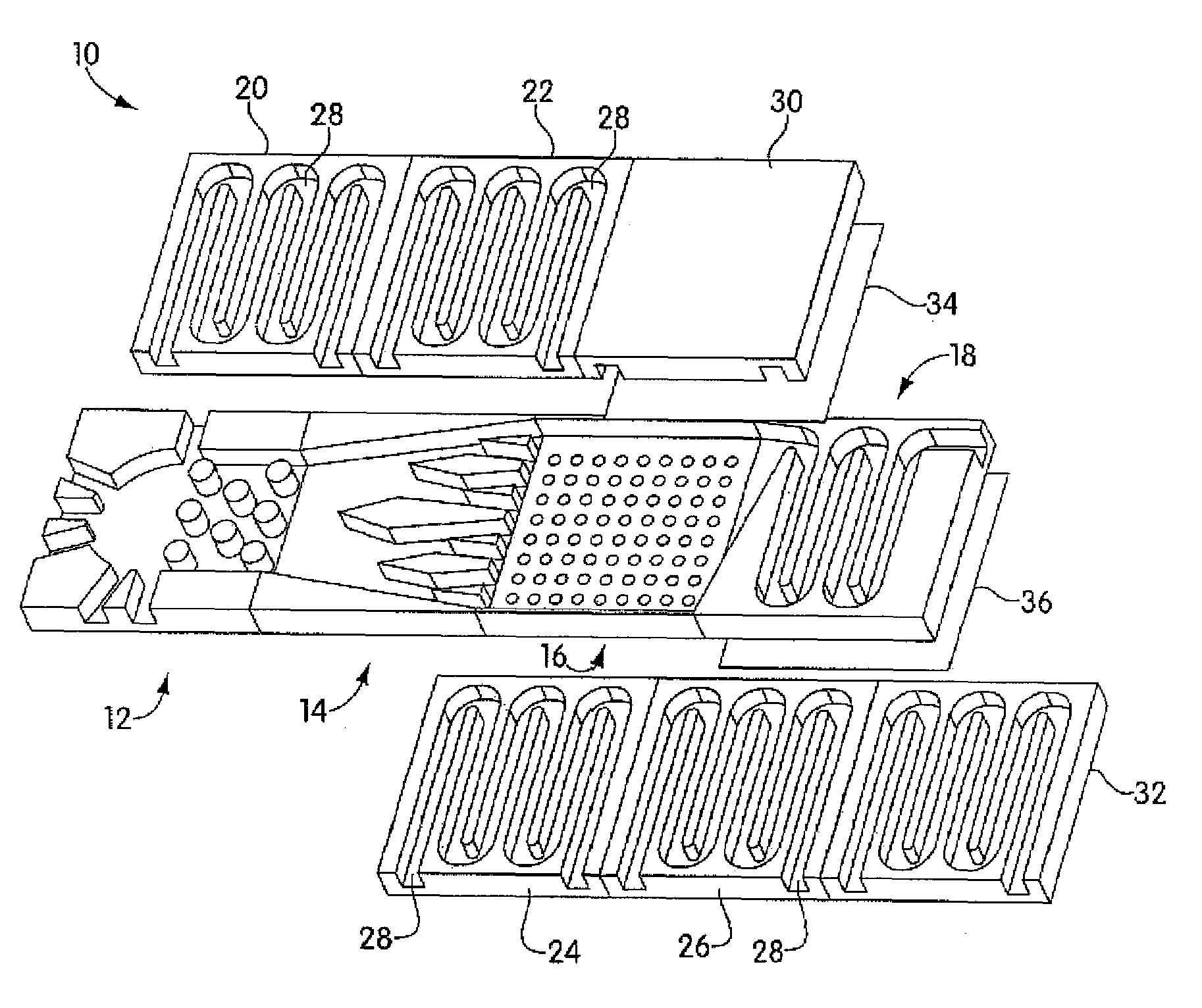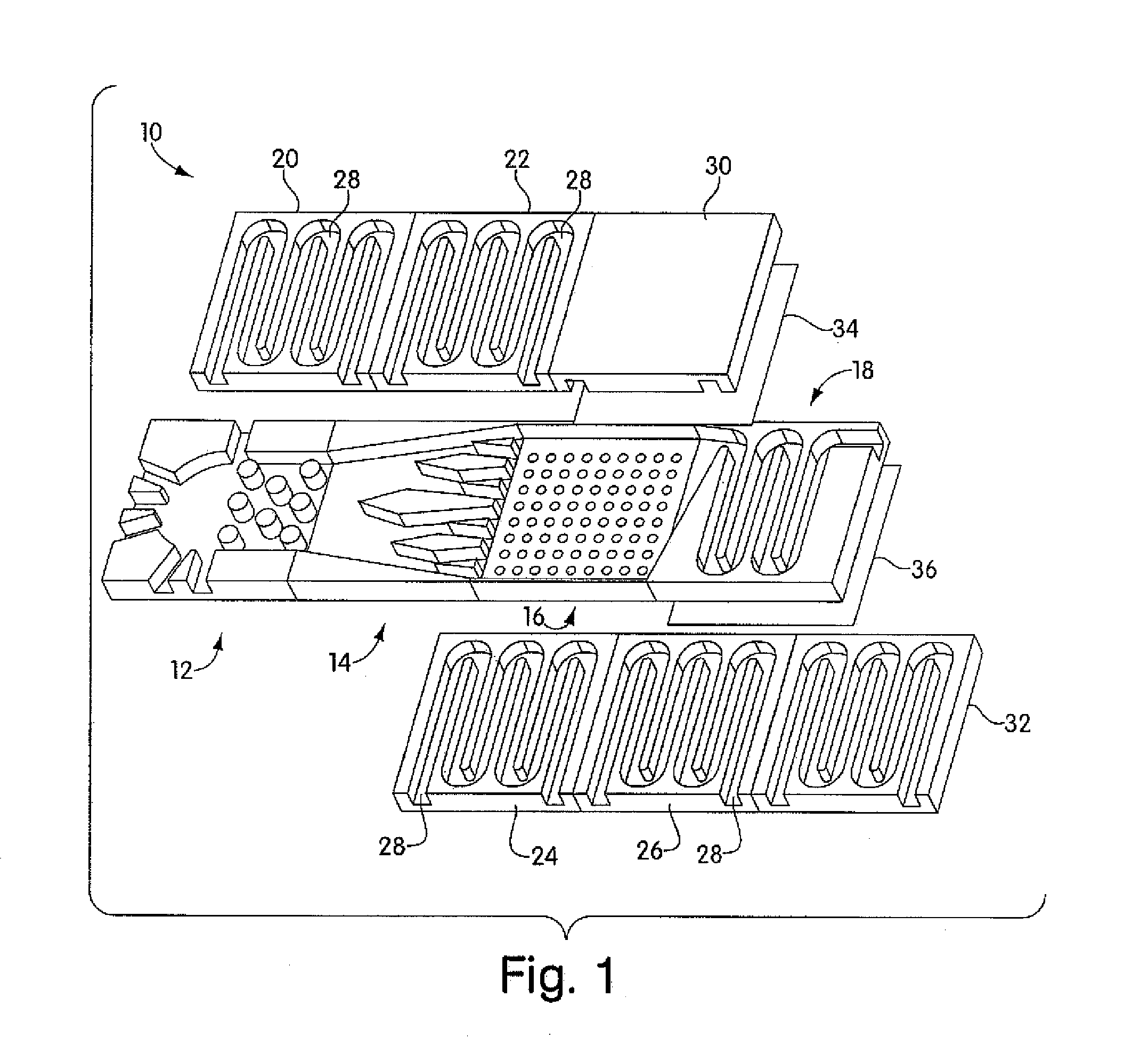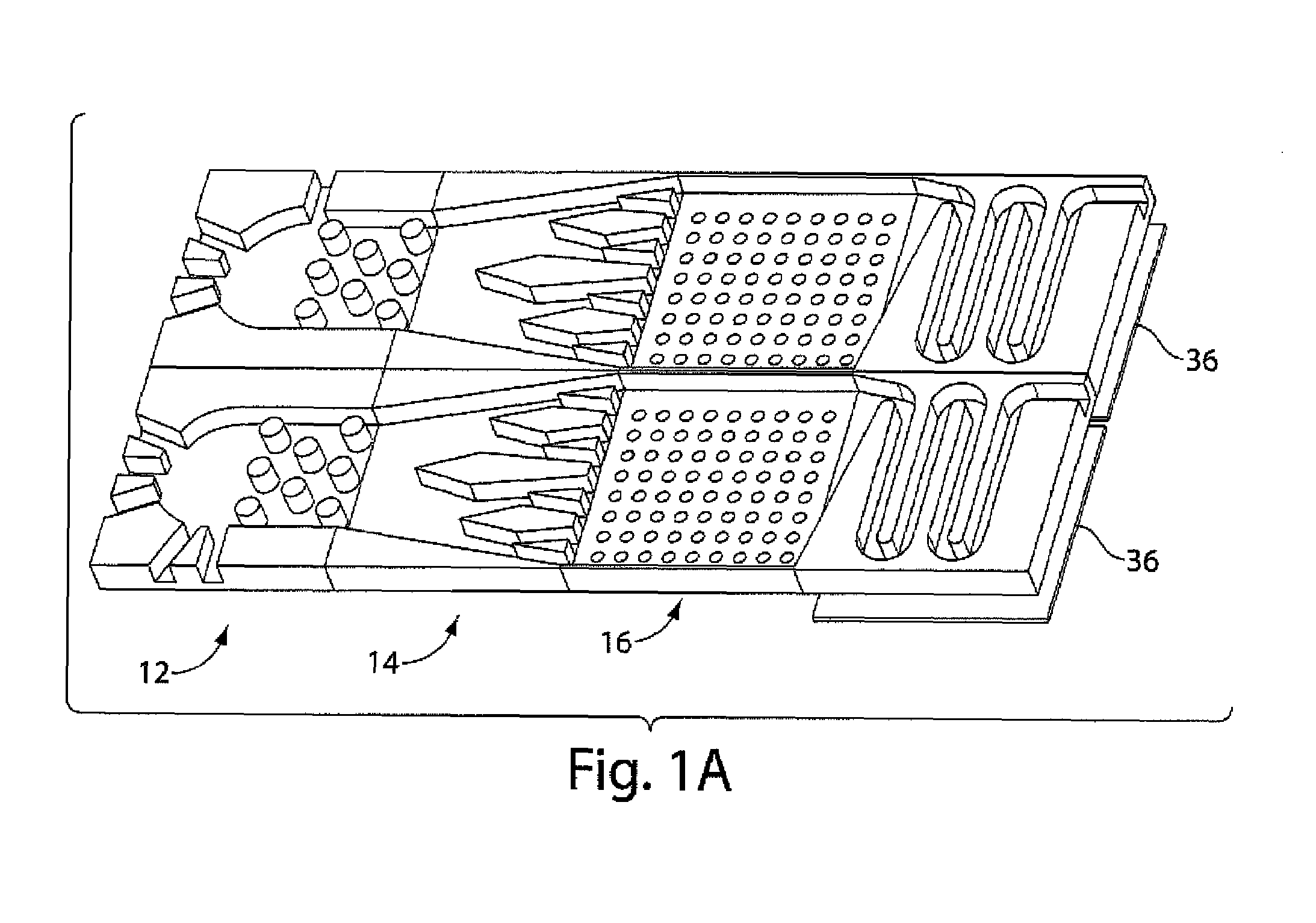Microreactor
a micro-reactor and micro-reactor technology, applied in the direction of flow mixers, fluid speed measurement, chemical/physical/physical-chemical stationary reactors, etc., can solve the problems of increasing the growth rate of cells, physical and mechanical constraints on the vessel in which the cells are contained, and bioreactors (fermentors) with several significant operational limitations
- Summary
- Abstract
- Description
- Claims
- Application Information
AI Technical Summary
Benefits of technology
Problems solved by technology
Method used
Image
Examples
Embodiment Construction
[0028]The present invention provides a chemical or biochemical reactor that can be used for a variety of very small-scale techniques. In one embodiment, a microreactor of the invention comprises a matrix of a few millimeters to a few centimeters in size containing reaction channels with dimensions on the order of hundreds of microns. Reagents of interest are allowed to flow through these microchannels, mixed, and reacted together. The products can be recovered, separated, and treated within the system. While one microreactor may be able only to hold and react a few microliters of the substances of interest, the technology allows for easy scalability and tremendous parallelization. With enhanced oxygen and nutrient distribution, a microreactor of the invention demonstrates increased performance in terms of cell viability. The microreactor geometry resembles closely the natural environment of cells whereby diffusional oxygen and nutrient transfer take place through a high surface area...
PUM
| Property | Measurement | Unit |
|---|---|---|
| Volume | aaaaa | aaaaa |
| Temperature | aaaaa | aaaaa |
| Temperature | aaaaa | aaaaa |
Abstract
Description
Claims
Application Information
 Login to View More
Login to View More - R&D
- Intellectual Property
- Life Sciences
- Materials
- Tech Scout
- Unparalleled Data Quality
- Higher Quality Content
- 60% Fewer Hallucinations
Browse by: Latest US Patents, China's latest patents, Technical Efficacy Thesaurus, Application Domain, Technology Topic, Popular Technical Reports.
© 2025 PatSnap. All rights reserved.Legal|Privacy policy|Modern Slavery Act Transparency Statement|Sitemap|About US| Contact US: help@patsnap.com



